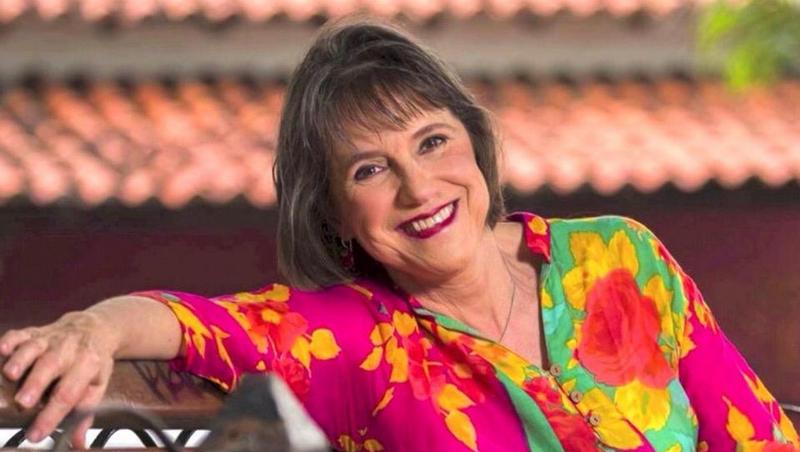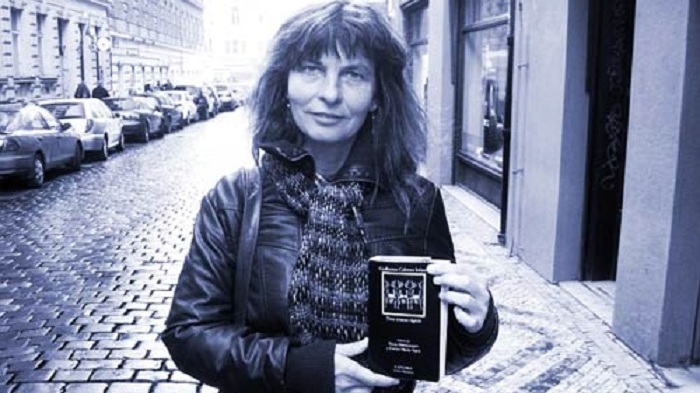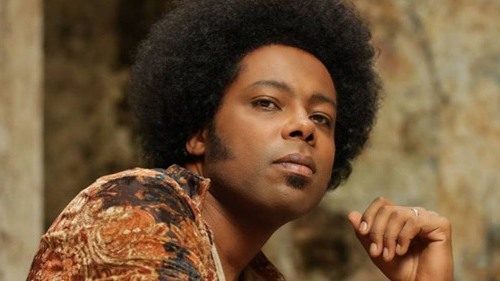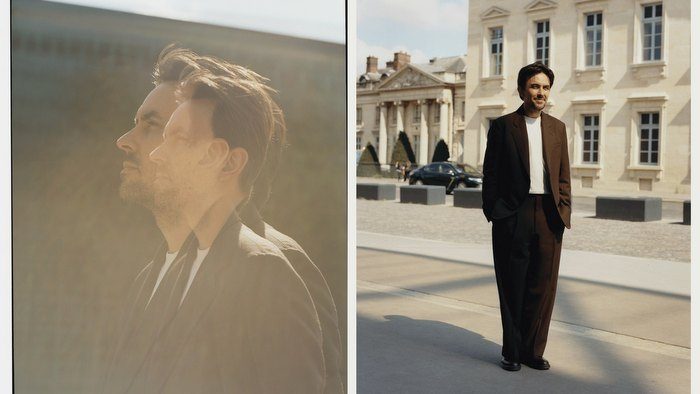Coline Milliard: 2022 was the launch year for Paris+ par Art Basel. 2024 will see you rehoused in the renovated Grand Palais. How would you characterize the 2023 edition?
Clément Delépine: We’re obviously going to step up a gear compared to 2022. Last year, we launched the fair in nine months, whereas we were able to work for a full year on this edition. So 2023 will be a year of fine-tuning. That said, it also remains a year of transition and experimentation. We’ll continue to send out a few trial balloons.
Will there be any notable changes from last year?
First of all, there are some important changes to the list of galleries. This year, for example, we’ll be welcoming Blum & Poe, Bortolami, kurimanzutto, Jan Mot, and P.P.O.W for the first time. In the Modern and secondary market category, we’re expecting Richard Nagy Ltd. Four galleries – Galerie Anne Barrault, Antenna Space, Carlos/Ishikawa, Edouard Montassut – who took part in the Galeries Émergentes sector last year, will be joining the main sector this year. It’s important that Paris+ par Art Basel can support and accompany the development of young galleries. We’ve also retained a French specificity. More than a third of our exhibitors have a space in France, and that's crucial to the fair’s identity. So I’m particularly pleased with the choices made by the selection committee.
You’re known for your support of emerging artists. Are there any artistic developments that strike you as particularly clear at the moment?
Artists’ work often reflects the issues that run through society. From my point of view, this is all the more evident in the work of emerging artists. At the moment, there’s a lot of talk about the return of ‘craft’ and the artisanal gesture. I’ve also noticed a preoccupation with the non-human. More and more young artists are questioning our lack of regard for the world that made us, and projecting themselves into animal or ecosystemic environmental perspectives. There are also many young artists using clothing as a medium. We’re witnessing a rapprochement between creative fields; these boundaries were once less permeable – fashion and art are a good example.
Last but not least, many young artists are skillfully using the medium of video in all its forms, including virtual reality, video game engines, and artificial intelligence software. There are some really interesting things going on at the moment in terms of the moving image.
How will these developments be visible in the Galeries Émergentes sector?
To mention just a few, there are some very strong video presentations in this sector. For example, London’s seventeen gallery will present the work of Joey Holder, while Shanghai’s BANK gallery will show the work of Lu Yang, and Chicago’s DOCUMENT will exhibit a proposal by the Indonesian collective Tromarama, combining different mediums.
Paris + par Art Basel has always aimed to engage with and activate the the city in the broadest sense. How will this manifest itself in 2023?
We’re continuing to intensify our network of institutional collaborations. As a result, our public programs will expand significantly. For example – for the first time in Art Basel’s history – we will be presenting the Conversations program in an institution: the Forum du Centre Pompidou.
Like last year, we’ll be taking over the Jardin des Tuileries, in collaboration with the musée du Louvre, for an exhibition curated by Annabelle Ténèze, the current director of Les Abattoirs in Toulouse who is about to take the helm of the Louvre Lens. In collaboration with the City of Paris, we will once again occupy the Place Vendôme, this time with a major work by Urs Fischer, presented by Gagosian. We’ve also added the forecourt of the Institut de France to our program, with a large-scale column by Sheila Hicks presented by galerie frank elbaz, in collaboration with Meyer Riegger, and Francesca Minini.
We’ll also be continuing our collaboration with the École des Beaux-Arts for an exhibition by Jessica Warboys, curated by Gaudel de Stampa, in the Chapelle des Petits-Augustins. And finally we’ll begin a new collaboration with the Palais d’Iéna, which this year will host a dialogue between Daniel Buren and Michelangelo Pistoletto, curated by Matthieu Poirier, with the support of Galleria Continua.
Paris+ par Art Basel is becoming a true collaborator for Parisian institutions.
This is very important to us. In my opinion, one of the keys to the Parisian revival lies in the activities of private foundations. Collaborations between the public and private sectors have led to major exhibitions: I’m thinking, for example, of Charles Ray at the Bourse de Commerce Pinault Collection and the Centre Pompidou, or Cyprien Gaillard shown by Lafayette Anticipations and the Palais de Tokyo at the same time. We’re delighted to be part of this productive dynamic.
Paris+ par Art Basel is an annual rendezvous, bringing together under one roof extraordinary works of art, presented by fantastic galleries, and enjoyed by highly committed collectors. It’s this audience – curious, invested, international – that we mobilize for our partner institutions.
Finally, we also have a responsibility to make ourselves accessible to all audiences. We have a major educational role to play, as some of our works are only shown in the context of a fair. Our mission goes beyond the commercial sphere, and our audiences are many and varied, so I think it’s vital that the fair extends beyond the walls of the Grand Palais Éphémère. It’s also worth noting that all our public programs are free and open to all.
You mentioned the Conversations program, cocurated by Pierre-Alexandre Matéos and Charles Teyssou. As you said, this year’s Conversations will take place at the Centre Pompidou, right in the heart of Paris. Why is this important?
We’re fortunate to be able to stage the Conversations program in a venue that creates important conversations around art and has a phenomenal footfall: the Centre Pompidou is one of the most iconic and visited museums in the world. Being present here allows us to invite visitors who wouldn’t come to the Grand Palais Éphémère. The idea is to create new encounters and chance collisions. My hope is that someone will overhear a snippet of conversation as they pass through, and that this phrase will percolate, making them think – or react. That’s what art is all about.
Another very important collaboration for Paris+ par Art Basel is with Lafayette Anticipations. Each year, the foundation and the fair join forces to reward a gallery and the artist they present in the Galeries Émergentes sector. The artist is awarded a residency and exhibition in Paris the following year, as well as creative support and the gallery is reimbursed for its participation in the fair. This creates a link between each of the editions.
The idea is to support galleries and artists over the long term – this is very important for us. Careers are built over time. Some of today’s ‘emerging’ artists will achieve great heights and will one day be considered ‘blue chip’. This partnership may lead to a first institutional exhibition in France.
According to the Art Market Report published by Art Basel and UBS, France is the world’s 4th-largest art market, with a volume approaching $5 billion – a historic first. What signs of this growth have you seen on the ground?
France’s share of the global art market has risen from 4% to 7% in 20 years. Today, France accounts for 50% of all art transactions in Europe. It’s also a market that grows richer because it imports and works remain in circulation in France. Concrete signs of this include the fact that many galleries are opening and expanding here. Gallerists trust the French market.
What do you think sets Paris apart from other art centers around the world?
I believe fundamentally in the permeability between creative fields. Paris naturally allows the intersection of the visual arts and fashion, design, architecture, gastronomy… It’s not a question of levelling out everything – certainly not – but the cultural moment is all about decompartmentalization and Paris can be the testing ground for this. The city has always been a laboratory for the avant-garde – in fact, this is also one of the subjects of the Conversations program. So, in the end, I think that the avant-garde nature of Paris, in the past, present, and future, allows us to test new ideas and be at the forefront of conversations about art.
Finally, you mention experimentation. What should a visitor to Paris try out at least once?
Paris is a dense city and relatively small compared to other capitals. You can walk from north to south, or east to west, in less than three hours. For those who can, I think it’s the best way to understand the city.
On the cover: Clément Delépine, director of Paris+ par Art Basel, Paris, 2023. Photographs by Bettina Pittaluga for Art Basel.
Source: Art Basel
Related Publications

Cecilia Todd. Singing always makes sense
August 21, 2020
Q & A with Marguerite Horberg of Hot House
July 17, 2020
Anežka Charvátová and translation as a pleasure
March 31, 2020











